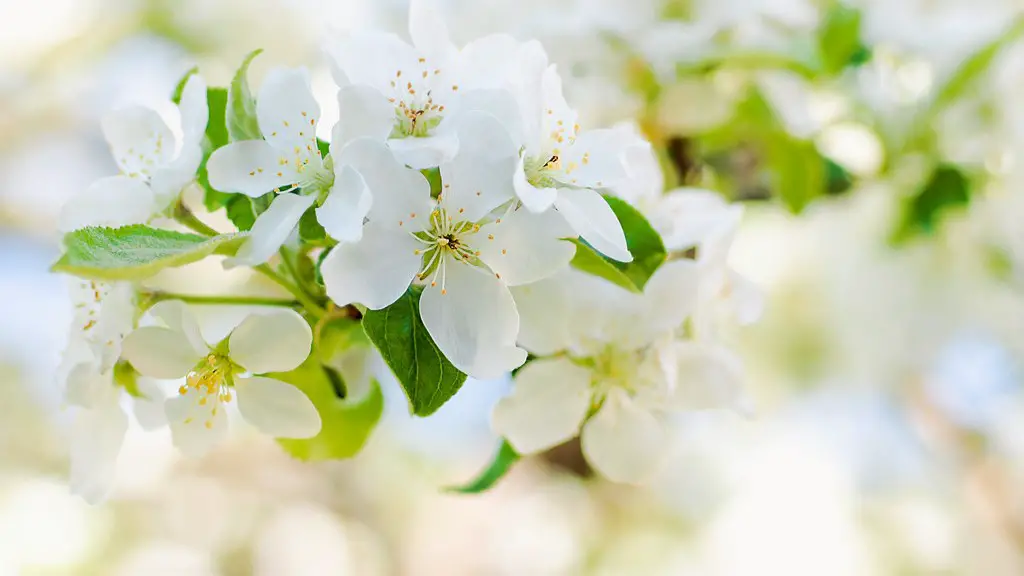An avocado tree is a type of fruit tree that provides a healthy, versatile and interesting addition to your yard’s planting scheme and landscape. Avocado trees are well adapted to many parts of America and can provide shade, and areas of interest in your garden. Although there are many varieties to choose from, the Hass and Fuerte are the most common in the United States. When it comes to planting an avocado tree in your yard, there are several factors to consider.
Firstly, you need to decide on the variety of tree. As mentioned, the most common varieties are the Hass and the Fuerte, but you may also consider a Reed, Bacon, Zaragoza or even an A-1. The main consideration is which variety will best suit the climate and soil conditions in your area. You should also think about the tree size. Some varieties of avocado tree are larger and more vigorous than others and will require more space for their root systems and growth. The bigger the tree, the more space it will need both on the ground and in the sky.
The optimal location for an avocado tree is full sun. Avocadoes need at least 8 hours of direct sun per day to produce a good crop. In partial shade, there might still be some benefit, but the tree will produce far fewer fruits. It is also important to consider the proximity of other trees and shrubs, as avocado trees need good air circulation. Pruning or thinning out other plants around the avocado tree will ensure it receives adequate airflow.
Soil quality is also an important factor when planting an avocado tree. These trees require a deep, nutrient-rich soil so you may need to add more rich compost or soil enhancer when planting. It is also important to note that avocadoes do not like wet feet and should not be planted in damp or waterlogged areas. Although they don’t need much in the way of fertilising, avocado trees can benefit from a weak liquid feed once or twice a year, and they will also benefit from some mulching around the base of the tree in the warmer months.
Once the tree is planted, it is important to establish a watering routine. Avocados need to be kept consistently moist, especially during flowering and fruiting. However, over irrigating can be an issue in some regions, so it is important to monitor both the soil and the weather. Plants in winter should not require additional watering as regular rainfall should be sufficient.
If you are looking to add an interesting and productive addition to your garden, the avocado tree is a perfect choice. With careful selection, soil conditioning and planting, you should be enjoying the fruits (literally!) of your labour within a few years.
Pruning
Pruning an avocado tree is important to its development and it should be done on an annual basis. During the tree’s early development, this can be done mainly in winter, removing any dead and damaged stems and branches, and lightly pruning away excess growth. As the tree matures, pruning should be done again in mid-summer and again in the winter months to encourage more lateral branching. Pruning away the tips of branches should also encourage the trees to grow outwards, ensuring that light can filter through.
Harvesting
Avocado trees can take several years to bear fruit, but when they do you will have an abundant crop. Avocados are best ripened on the tree and should be picked when the skin of the fruit turns a dark purplish-black. If you detect any softness in the fruit, it is ready to harvest. This can also be tested by gently tugging the fruit away from the branch with your finger. If it comes away freely, it is ready to pick. Ripe avocadoes should be stored in a cool place and left to ripen to perfection.
Pest Control
Pest control is an important part of ensuring that your avocado tree is healthy and productive. Most avocadoes are susceptible to scale insects, mites and thrive caused by fungal or bacterial disease. Therefore, keeping your tree well nourished and watered is essential. To simplify pest and disease control, use an organic-based or slow-release fertilizer as this will keep the plant healthy without the need for any toxic treatments. Pruning will also help to remove pests and ensure adequate ventilation which should reduce the chance of diseases.
General Care
General care of an avocado tree involves periodic trimming (i.e. once a year), fertilising and the application of fungicides and insecticides as needed. It is also important to monitor the tree’s growth, as some avocado trees can become quite tall and may need regular pruning and support to prevent the branches from becoming too heavy.
To ensure an abundant crop of avocadoes, it’s important to water your plant as frequently as possible. Avocado trees prefer soil that is kept consistently moist, so watering your tree every two weeks should be sufficient in most climates. During particularly dry months or seasons, however, it is recommended that you water your tree more often. Lastly, you should keep the base of your tree free from weeds and other forms of competition for water and nutrients.
Climate
When considering where to plant an avocado tree, climate is an important factor to take into consideration. Most avocado trees prefer warm climates, and should not be exposed to freezing conditions or extended cold snaps. In most instances, if you live in a USDA hardiness zone 8 or higher, you should have no problems growing an avocado tree. In colder climates, however, an avocado tree may require some protection, such as creating a mini-greenhouse or covering the tree with a sheet on cold nights.
Diseases
Avocado trees are fairly robust plants, but they can be affected by a number of fungal and bacterial diseases. The most common of these include anthracnose, bacterial canker, amillaeous leaf spot and root rot. These diseases are caused by a build-up of moisture or exposure to certain fungal spores, so it is important to ensure adequate air circulation, water sparingly and maintain a healthy plant.
The most effective treatment for an avocado tree affected by disease is prevention. Ensuring that your tree is healthy and well cared for will help to reduce the risk of infection. Picking up fallen fruit and keeping good ventilation around the tree will also help to reduce the risk of disease.
Fertilizing
Fertilizing an avocado tree is important to ensure optimal growth and productivity. The optimal fertilizer for an avocado tree is a high-quality organic mix that contains the essential macro and micro nutrients. Compost and manure can also be beneficial, as both provide a slow and steady release of nutrients into the soil. A liquid feed once or twice a year will also be beneficial and can help to boost growth.
It is important to note that avocado trees should not be over fertilized. Too much fertilizer can actually lead to stunted or distorted growth and should be avoided at all costs. When fertilizing your avocado tree, start off slowly and modestly and then increase the amount as needed.


